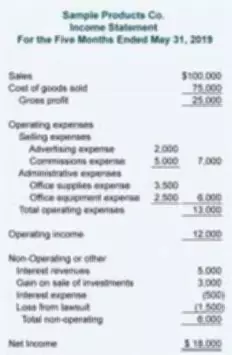Content

This means that goods purchased at an earlier time are usually cheaper than those same goods purchased later. Due to inflation, the more recent inventory typically costs more than older inventory. With the FIFO method, since the lower value of goods are sold first, the ending inventory tends to be worth a greater value. Read on for a deeper dive on how FIFO works, how to calculate it, some examples, and additional information on how to choose the right inventory valuation for your business. When Susan first opened her pet supply store, she quickly discovered her vegan pumpkin dog treats were a huge hit and bringing in favorable revenue.
When you purchase more goods and add them to your inventory, you’ll reflect the most recent costs as inventory and use that cost as a basis for pricing. As you sell goods, you’re selling the oldest goods first at the original COGS. When your business uses FIFO, you can accurately reflect the changes in the value of your inventory over time. Valuation is the process https://www.bookstime.com/articles/how-to-calculate-fifo-and-lifo of determining the worth of your inventory, and there are several methods you can use. With NetSuite, you go live in a predictable timeframe — smart, stepped implementations begin with sales and span the entire customer lifecycle, so there’s continuity from sales to services to support. The company would report a cost of goods sold of $1,050 and inventory of $350.
The Difference Between FIFO and LIFO
COGS, therefore, is $2,950 ($1,600 + $760 + $600) and ending inventory is $1,000 ($3,950 – $2,950). COGS, therefore, is $2,350 ($1,000 + $600 + $750) and ending inventory is $1,600 ($3,950 – $2,350). Companies can also compare their calculated ending inventory value with actual physical inventory to identify potential problems, such as inventory shrinkage. In the following example, we will compare FIFO to LIFO (last in first out). No doubt, LIFO provides you with a high-quality income statement matching. However, under the US GAAP (Generally Accepted Accounting Principles), LIFO is permitted.
What is the first rule of FIFO?
FIFO is “first in first out” and simply means you need to label your food with the dates you store them, and put the older foods in front or on top so that you use them first. This system allows you to find your food quicker and use them more efficiently.
If COGS are higher and profits are lower, businesses will pay less in taxes when using LIFO. Of course, the IRA isn’t in favor of the LIFO method as it results in lower income tax. FIFO, on the other hand, is the most common inventory valuation method in most countries, accepted by IFRS International Financial Reporting Standards Foundation (IRFS) regulations. A higher inventory valuation can improve a brand’s balance sheets and minimize its inventory write-offs, so using FIFO can really benefit a business financially. While there is no one “right” inventory valuation method, every method has its own advantages and disadvantages. Here are some of the benefits of using the FIFO method, as well as some of the drawbacks.
Which method of inventory management should you use?
Some businesses, like lumber yards, may actually sell the newest inventory first. Your total cost of goods has changed because you sold the most recent inventory first. In other words, it’s easier to make errors with LIFO and get inaccurate valuations of your business inventory. For example, if you sell perishable items like food, drinks, or produce, your business is well-suited to FIFO because it makes sense to sell your oldest items first.
- Dollar-cost averaging involves averaging the amount a company spent to manufacture or acquire each existing item in the firm’s inventory.
- First, we need to know our total costs for the period (or total costs to account for) by adding beginning work in process costs to the costs incurred or added this period.
- Any remaining assets would be matched to those most recently purchased.
- Following FIFO, a company assumes that their oldest items will sell first, even if they haven’t actually sold first.
- In the absence of inflation, both LIFO and FIFO give the same outcomes.
- With this level of visibility, you can optimize inventory levels to keep carrying costs at a minimum while avoiding stockouts.
You can also use FIFO value calculation as a way to predict your cash flow, especially as your previous FIFO inventory calculations can create a benchmark and you’re getting real-time data. When your inventory can’t be sold or is out of date, then it becomes obsolete, but the FIFO inventory method helps you reduce the risk of having high amounts of obsolete inventory. Using FIFO helps you mitigate your inflation losses because, as the cost of goods rises, you’re able to adjust your prices of the previous stock and sell it at a higher cost as inflation dictates. Both have their advantages, but if you want to have an accurate inventory value, we recommend the FIFO inventory method.
A Simple Guide to the FIFO Inventory Valuation Method
Because it would be incredibly difficult and time-consuming to obtain an exact inventory count, it uses the retail method to estimate ending inventory. By using FIFO, the balance sheet shows a better approximation of the market value of inventory. The latest costs for manufacturing or acquiring the inventory are reflected in inventory, and therefore, the balance sheet reflects the approximate current market value. The remaining unsold 150 would remain on the balance sheet as inventory at the cost of $700. In simple terms, LIFO valuation method reduces taxes and even assists match revenue with cost.
- Dive into how we made our CPA review course a better tool than the outdated methods you’re used to seeing.
- Because this method assumes that the most recently purchased items are sold, the value of the ending inventory is based on the cost of the oldest items.
- Though it’s the easiest and most common valuation method, the downside of using the FIFO method is it can cause major discrepancies when COGS increases significantly.
- FIFO is a widely used method to account for the cost of inventory in your accounting system.
In most companies, this assumption closely matches the actual flow of goods, and so is considered the most theoretically correct inventory valuation method. The FIFO flow concept is a logical one for a business to follow, since selling off the oldest goods first reduces the risk https://www.bookstime.com/ of inventory obsolescence. This means that the periodic average cost is calculated after the year is over—after all the purchases for the year have occurred. This average cost is then applied to the units sold during the year and to the units in inventory at the end of the year.
How Do You Calculate FIFO?
The point here is just that FIFO is an accurate, simple method for helping you determine COGS. And your sales pattern doesn’t have to follow FIFO cash flow perfectly. To start, you need to purchase some beginning inventory to stock your warehouse. This method is easy to understand and track, making it ideal for business owners with large and complex inventories.
- By using the FIFO method, you would calculate the COGS by multiplying the cost of the oldest inventory units with the number of units sold.
- Intel technologies may require enabled hardware, software or service activation.
- An online lifo fifo calculator allows you to calculate the remaining value of inventory and cost of goods sold by using the fifo and lifo method.
- Whether you need an eagle eye into the hundreds of items you sell or if you just want to stay on top of your stock, there’s an inventory management solution that’s right for you.
- For income tax purposes in Canada, companies are not permitted to use LIFO.
- Of course, choosing between LIFO and FIFO isn’t a lifetime commitment.
Also, because the newest inventory was purchased at generally higher prices, the ending inventory balance is inflated. The costs of buying lamps for his inventory went up dramatically during the fall, as demonstrated under ‘price paid’ per lamp in November and December. So, Lee decides to use the LIFO method, which means he will use the price it cost him to buy lamps in December. To calculate COGS (Cost of Goods Sold) using the LIFO method, determine the cost of your most recent inventory. To calculate COGS (Cost of Goods Sold) using the FIFO method, determine the cost of your oldest inventory. The FIFO (“First-In, First-Out”) method means that the cost of a company’s oldest inventory is used in the COGS (Cost of Goods Sold) calculation.
Other Costing Methods
An online lifo fifo calculator allows you to calculate the remaining value of inventory and cost of goods sold by using the fifo and lifo method. The product inventory management becomes easy with the assistance of this calculator for first-in-first-out and last-in-last-out. The last in, first out inventory method uses current prices to calculate the cost of goods sold instead of what you paid for the inventory already in stock. If the price of goods has increased since the initial purchase, the cost of goods sold will be higher, thus reducing profits and tax liability.

Ending inventory is a critical metric for any company that sells physical goods, affecting both the balance sheet and income statement. It’s important to choose a valuation method that matches the company’s needs — the choice can affect the stated value of the company’s assets as well as its profit and the amount of taxes it owes. Inventory management software can help businesses track ending inventory more easily while reducing the potential for manual error. The fictitious company 123 Holdings needs to calculate ending inventory to prepare financial statements at the end of the current period.
5 Process Costing (FIFO Method)
The cost of goods sold for 40 of these items is $10, and the entire first order of 100 units has been fully sold. The other 10 units that are sold have a cost of $15 each, and the remaining 90 units in inventory are valued at $15 each (the most recent price paid). LIFO is the opposite of the FIFO method and it assumes that the most recent items added to a company’s inventory are sold first. The company will go by those inventory costs in the COGS (Cost of Goods Sold) calculation. Under the LIFO cost flow assumption, the latest (or most recent) costs are the first ones to leave inventory and become the cost of goods sold on the income statement.


